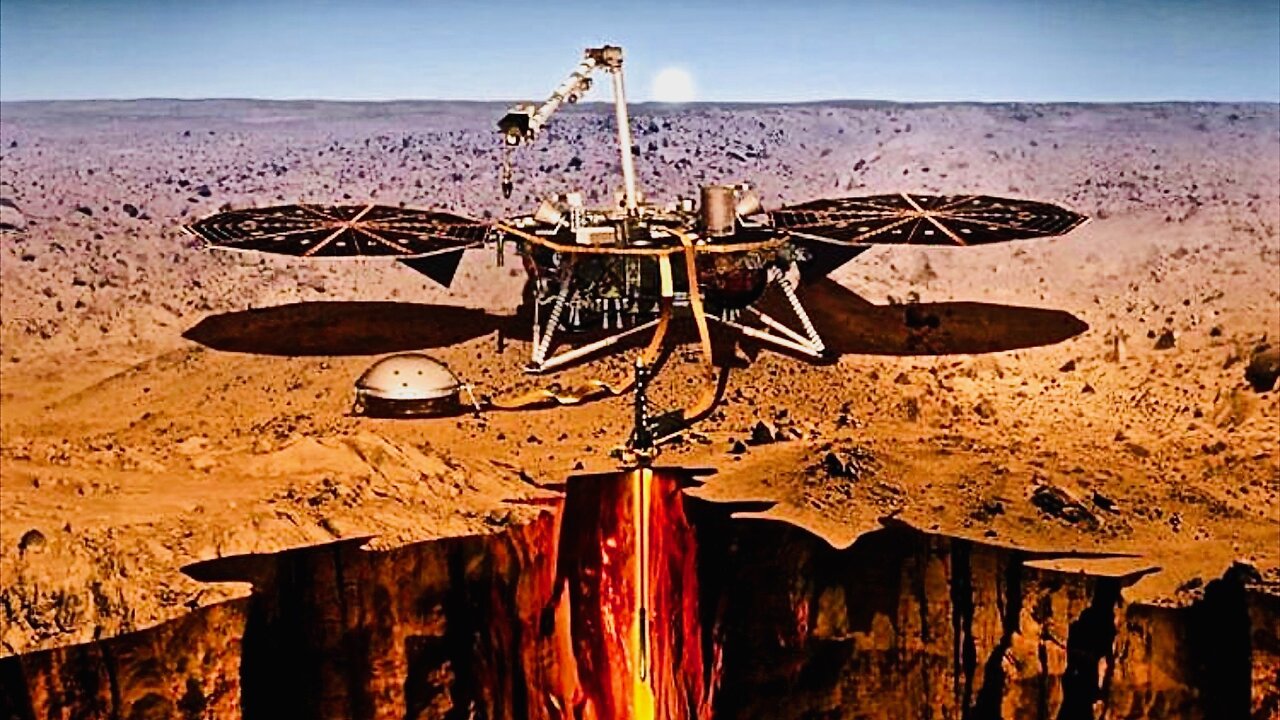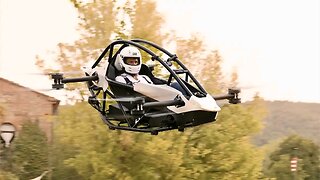Premium Only Content

First 'Marsquake' Detected by NASA & Electrodynamic Dust Shield Developed
Mars is shaking. After several months of apprehensive waiting on a quiet surface, NASA’s InSight lander has registered a sweet, small sound: the first marsquake ever recorded. On 6 April, the lander’s seismometer detected its first verifiable quake, NASA and its European partners announced today. The quake is tiny, so small that it would never be detected on Earth amid the background thrum of waves and wind. But Mars is dead quiet, allowing the lander’s sensitive seismometer to pick up the signal, which resembles similar surface ripples detected traveling through the moon’s surface after moonquakes. The quake is so small that scientists were unable to detect any waves tied to it that passed through the martian interior, defying efforts to estimate its exact location and strength, says Philippe Lognonné, a planetary seismologist at Paris Diderot University who leads the mission’s seismometer experiment. Still, it was gratifying to observe, he says. “It is the first quake. All the time, we were waiting for this.”
The detection is a milestone for the $816 million lander, kicking off a new field of “martian seismology,” added Bruce Banerdt, InSight’s principal investigator and a geophysicist at NASA’s Jet Propulsion Laboratory (JPL) in Pasadena, California, in a news release. It proves Mars is seismologically active, and marks NASA’s return to planetary seismology after more than 4 decades. The mission is intended to peer through the planet’s rust-colored shell, gauging the thickness and composition of its crust, mantle, and core. But while on Earth, the lander was plagued by delay and cost overruns; since landing on Mars in a sand-filled hollow, the lander’s second instrument, a heat probe, got stuck soon after it began to burrow into the surface.
Scientists had good reason to believe that Mars hosted such quakes even though it lacks plate tectonics, the force that drives most earthquakes. The moon suggested so: Seismometers deployed by the Apollo program had detected quakes caused by meteorite impacts, the solar-driven thermal expansion of its crust, and the gravitational tug of Earth. But the frequency was unknown. The InSight team estimated it might see one a month, but that number could be much higher or lower. And so, after deploying the volleyball-size seismometer and its shield in early February, the researchers waited. The seismometer was working well, they found: It was picking up background vibrations, called microseisms, in the martian surface that were induced by wind. But still, as the weeks ticked by, no quakes.
Dust can be a nuisance — on Earth and the Moon. Astronauts exploring the Moon’s South Pole will need a way to help keep pesky lunar dust out of hard to reach places.
A team at NASA’s Kennedy Space Center in Florida may have the solution. The technology launched to the space station April 17, 2019, from Wallops Flight Facility on the eastern shore of Virginia as part of the Materials International Space Station Experiment (MISSE)-11 mission.
“This is the first flight of the Electrodynamic Dust Shield (EDS) and the first exposure to the space environment,” said Kennedy scientist Dr. Carlos Calle. “It is a big deal, and we are very excited. We’ve been working on this for a long time.”
The senior principal investigator for the Electrostatics and Surface Physics Lab, Calle has worked at Kennedy for 20 years, including 15 on the EDS. He currently leads a team of about eight researchers striving to perfect the technology that uses dynamic electric fields to remove dust from surfaces. They have had many successes and performed hundreds of hours of testing in vacuum chambers. But the upcoming year spent on the space station will provide Calle and his team invaluable data that can be used for future missions on the Moon and Mars.
“The idea is to expose the EDS to the low-Earth orbit space environment, which approximates the lunar surface environment during the daytime,” Calle said, “so we can validate the technology and prepare us to fly it on the lunar surface.”
The EDS is activated using transparent electrodes. “You don’t see them — they’re invisible,” Calle said. It can be integrated on astronauts’ visors, camera lenses, solar panels, optical instruments, habitat windows, lander viewports and even spacesuits. The EDS can operate manually — through a switch that would clear the dust in just seconds — or autonomously, which would continuously deflect the dust.
Music: Snooper (116 bpm) by Dhruva Aliman
Amazon- https://amzn.to/2MbZ3TF
https://music.apple.com/us/artist/dhruva-aliman/363563637
https://dhruvaaliman.bandcamp.com/album/snooper
http://www.dhruvaaliman.com/
Spotify - https://open.spotify.com/artist/5XiFCr9iBKE6Cupltgnlet
#NASA #Space #Mars
-
 3:33
3:33
Knowledge Land
2 months agoYour Personal Electric Aircraft Is Here - Jetson One
42 -
 LIVE
LIVE
Lofi Girl
2 years agoSynthwave Radio 🌌 - beats to chill/game to
286 watching -
 41:26
41:26
The Mel K Show
4 hours agoMel K & Clay Clark | Financial Success Hides Behind Self Discipline: Five Pillars | 8-24-25
22.6K3 -
 LIVE
LIVE
The Rabble Wrangler
12 hours agoThe Best in the West Plays Battlefield 2042 | Road to BF6 Grind
39 watching -
 LIVE
LIVE
JTtheSG
1 hour agoBack To The Deadzone!!!
106 watching -
 LIVE
LIVE
The Official Steve Harvey
13 days ago $5.11 earned24 HOURS OF MOTIVATION w/ STEVE HARVEY
322 watching -
 25:56
25:56
DeVory Darkins
22 hours ago $0.78 earnedTrump drops ULTIMATE BOMB on Democrat Mayors as ICE makes SHOCKING Announcement
47.4K176 -
 3:36:30
3:36:30
TonYGaMinG
7 hours ago🟢 ABI WITH FRIENDS | 🍩JOE DONUTS | 😶 🌫 VLADSGAMINGCARTEL |
25.4K4 -
 21:24
21:24
marcushouse
13 hours ago $0.12 earnedStarship Flight 10: Go or No? 🚀
34.3K13 -
 6:25:15
6:25:15
MrR4ger
18 hours agoSUNDAY FUNDAY w/ R4GER - VARIETY ANOTHER FCKN STREAM CRASH
27.9K